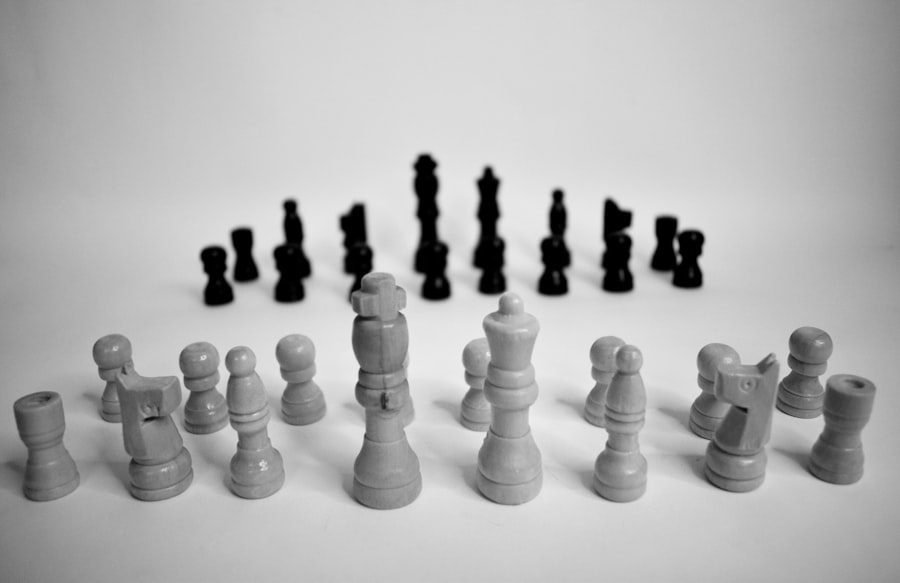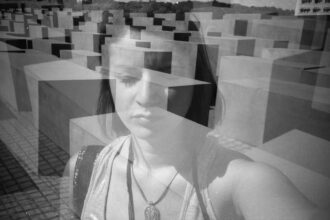Childhood depersonalization and derealization are complex psychological phenomena that can leave a lasting impact on a young person’s life. As you navigate through your formative years, you may find yourself experiencing a sense of disconnection from your own thoughts, feelings, or sense of self. This feeling of detachment can be unsettling, as if you are observing your life from a distance, almost like a spectator in your own story.
In essence, depersonalization refers to the sensation of being detached from oneself, while derealization involves feeling disconnected from the surrounding world. You might feel as though your body is not your own or that the environment around you is unreal or dreamlike.
These experiences can be particularly confusing during childhood when you are still developing your understanding of identity and reality. It’s crucial to approach these feelings with compassion and awareness, acknowledging that they are valid experiences that deserve attention and understanding.
Key Takeaways
- Childhood depersonalization and derealization are experiences where a child feels detached from themselves or their surroundings.
- Signs and symptoms of childhood depersonalization and derealization may include feeling like an outside observer of oneself, or feeling like the world is unreal or distorted.
- Causes and triggers of childhood depersonalization and derealization can include trauma, anxiety, stress, or other mental health conditions.
- Diagnosing childhood depersonalization and derealization may involve a thorough evaluation by a mental health professional, including ruling out other potential causes.
- Treatment options for childhood depersonalization and derealization may include therapy, medication, and lifestyle changes to manage symptoms and improve overall well-being.
Signs and Symptoms of Childhood Depersonalization and Derealization
Recognizing the signs and symptoms of childhood depersonalization and derealization can be the first step toward addressing these experiences. You may notice that you often feel detached from your emotions or find it challenging to connect with others. This emotional numbness can manifest as a lack of interest in activities you once enjoyed or difficulty forming relationships with peers and family members.
You might also experience a sense of confusion about who you are, leading to feelings of insecurity or anxiety. In addition to emotional symptoms, physical sensations may accompany depersonalization and derealization. You might feel as though your body is heavy or light, or that your surroundings appear distorted or foggy.
These sensations can be disorienting and may lead to increased anxiety or panic attacks.
By recognizing these signs, you can begin to understand what you are going through and seek the appropriate support.
Causes and Triggers of Childhood Depersonalization and Derealization

Understanding the causes and triggers of childhood depersonalization and derealization is essential for addressing these experiences effectively. Often, these feelings arise in response to overwhelming stress or trauma. You may have encountered significant life changes, such as the loss of a loved one, parental separation, or exposure to violence or abuse.
These events can create a sense of emotional overwhelm, leading your mind to adopt coping mechanisms like depersonalization and derealization as a way to protect itself from pain. Additionally, certain environmental factors can contribute to the development of these experiences. For instance, growing up in a chaotic or unstable environment may heighten your vulnerability to feelings of disconnection.
Factors such as bullying, academic pressure, or family conflict can also serve as triggers. It’s important to recognize that while these experiences can be distressing, they are often a natural response to challenging circumstances rather than a reflection of personal weakness.
Diagnosing Childhood Depersonalization and Derealization
| Age Range | Prevalence | Common Symptoms |
|---|---|---|
| 6-12 years | 1-3% | Feelings of detachment, altered perception of reality |
| 13-18 years | 3-5% | Depersonalization, derealization, anxiety, depression |
| 18+ years | 5-7% | Depersonalization, derealization, panic attacks, substance abuse |
Diagnosing childhood depersonalization and derealization can be a nuanced process that requires careful consideration by mental health professionals. If you or someone you know is experiencing these symptoms, seeking help from a qualified therapist or psychologist is crucial. They will typically conduct a comprehensive assessment that includes interviews, questionnaires, and discussions about your experiences and feelings.
This process helps them understand the context of your symptoms and determine whether they align with depersonalization-derealization disorder or another related condition. It’s important to approach this diagnostic process with openness and honesty. Sharing your experiences in detail can provide valuable insights for the clinician, allowing them to make an informed diagnosis.
They may also explore any underlying issues such as anxiety, depression, or trauma that could be contributing to your feelings of disconnection. Remember that seeking help is a sign of strength, and understanding your experiences is the first step toward healing.
Treatment Options for Childhood Depersonalization and Derealization
When it comes to treatment options for childhood depersonalization and derealization, there is no one-size-fits-all approach. However, several therapeutic modalities have shown promise in helping children navigate these experiences. Cognitive-behavioral therapy (CBT) is one effective method that focuses on identifying negative thought patterns and replacing them with healthier perspectives.
Through CBT, you can learn coping strategies to manage anxiety and develop a greater sense of self-awareness. In some cases, medication may also be considered as part of the treatment plan. Antidepressants or anti-anxiety medications can help alleviate symptoms associated with underlying conditions that may contribute to depersonalization and derealization.
However, medication should always be prescribed and monitored by a qualified healthcare professional. It’s essential to work collaboratively with your therapist or psychiatrist to determine the best course of action for your unique situation.
Coping Strategies for Children with Depersonalization and Derealization

Developing effective coping strategies can empower you to manage the challenges associated with depersonalization and derealization. One helpful technique is grounding exercises, which involve focusing on the present moment through sensory experiences. You might try engaging in activities that stimulate your senses, such as listening to music, feeling different textures, or practicing mindfulness meditation.
These exercises can help anchor you in reality and reduce feelings of disconnection. Another valuable strategy is journaling about your experiences. Writing down your thoughts and feelings can provide an outlet for self-expression and help you process what you are going through.
You might also consider talking to trusted friends or family members about your feelings; sharing your experiences can foster connection and understanding. Remember that coping strategies are personal; what works for one person may not work for another, so it’s essential to explore different approaches until you find what resonates with you.
Impact of Childhood Depersonalization and Derealization on Development
The impact of childhood depersonalization and derealization on development can be profound and far-reaching. As you navigate through critical stages of growth, these experiences may hinder your ability to form healthy relationships or develop a strong sense of identity. Feelings of disconnection can lead to social withdrawal, making it challenging to engage with peers or participate in activities that promote emotional growth.
Moreover, prolonged experiences of depersonalization and derealization can contribute to the development of anxiety disorders or depression later in life. The inability to process emotions effectively may result in difficulties managing stressors as you transition into adulthood. It’s crucial to address these experiences early on to mitigate their impact on your overall development and well-being.
Support and Resources for Children and Families Dealing with Depersonalization and Derealization
Finding support and resources is vital for children and families dealing with depersonalization and derealization. Schools often have counselors who can provide guidance and support; reaching out to them can be an excellent first step in finding help. Additionally, community mental health organizations may offer resources tailored specifically for children experiencing these challenges.
Family support plays a crucial role in navigating these experiences as well. Open communication within the family unit fosters understanding and empathy, allowing children to feel safe discussing their feelings without fear of judgment. Parents can also educate themselves about depersonalization and derealization to better support their child’s journey toward healing.
In conclusion, childhood depersonalization and derealization are complex experiences that require understanding, compassion, and appropriate intervention. By recognizing the signs, seeking help, and developing coping strategies, you can navigate these challenges more effectively. Remember that you are not alone; support is available for both you and your family as you work toward healing and growth.
Depersonalization-derealization disorder in children can be a challenging and often misunderstood condition, characterized by persistent feelings of detachment from one’s body or surroundings. Understanding and addressing this disorder early in life is crucial for effective management and support. For those interested in exploring this topic further, an insightful article can be found on Unplugged Psychology’s website. This article delves into the nuances of depersonalization-derealization in children, offering valuable perspectives and potential strategies for caregivers and professionals. To read more about this, visit the article on Unplugged Psychology.
LEARN MORE About Depersonalization & Derealization
FAQs
What is depersonalization-derealization disorder?
Depersonalization-derealization disorder is a mental health condition characterized by feeling detached from oneself (depersonalization) and feeling detached from the surrounding environment (derealization). It can make a person feel like they are observing themselves from outside their body or like the world around them is unreal.
What are the symptoms of depersonalization-derealization disorder in children?
In children, symptoms of depersonalization-derealization disorder may include feeling disconnected from their body or thoughts, feeling like they are in a dream, feeling like the world around them is distorted or unreal, and experiencing heightened anxiety or distress about these feelings.
What causes depersonalization-derealization disorder in children?
The exact cause of depersonalization-derealization disorder is not fully understood, but it is believed to be related to a combination of biological, psychological, and environmental factors. Trauma, stress, anxiety, and certain personality traits may contribute to the development of the disorder in children.
How is depersonalization-derealization disorder diagnosed in children?
Diagnosing depersonalization-derealization disorder in children involves a thorough evaluation by a mental health professional, including a comprehensive assessment of the child’s symptoms, medical history, and any potential underlying causes. The child may also undergo psychological testing to rule out other conditions.
What are the treatment options for depersonalization-derealization disorder in children?
Treatment for depersonalization-derealization disorder in children may include psychotherapy, such as cognitive behavioral therapy (CBT) or dialectical behavior therapy (DBT), to help the child understand and manage their symptoms. In some cases, medication may be prescribed to address underlying anxiety or depression.
Can depersonalization-derealization disorder in children be managed or cured?
While there is no specific cure for depersonalization-derealization disorder, many children can learn to manage their symptoms and improve their quality of life with appropriate treatment and support. Early intervention and ongoing therapy can help children develop coping strategies and reduce the impact of the disorder on their daily functioning.




